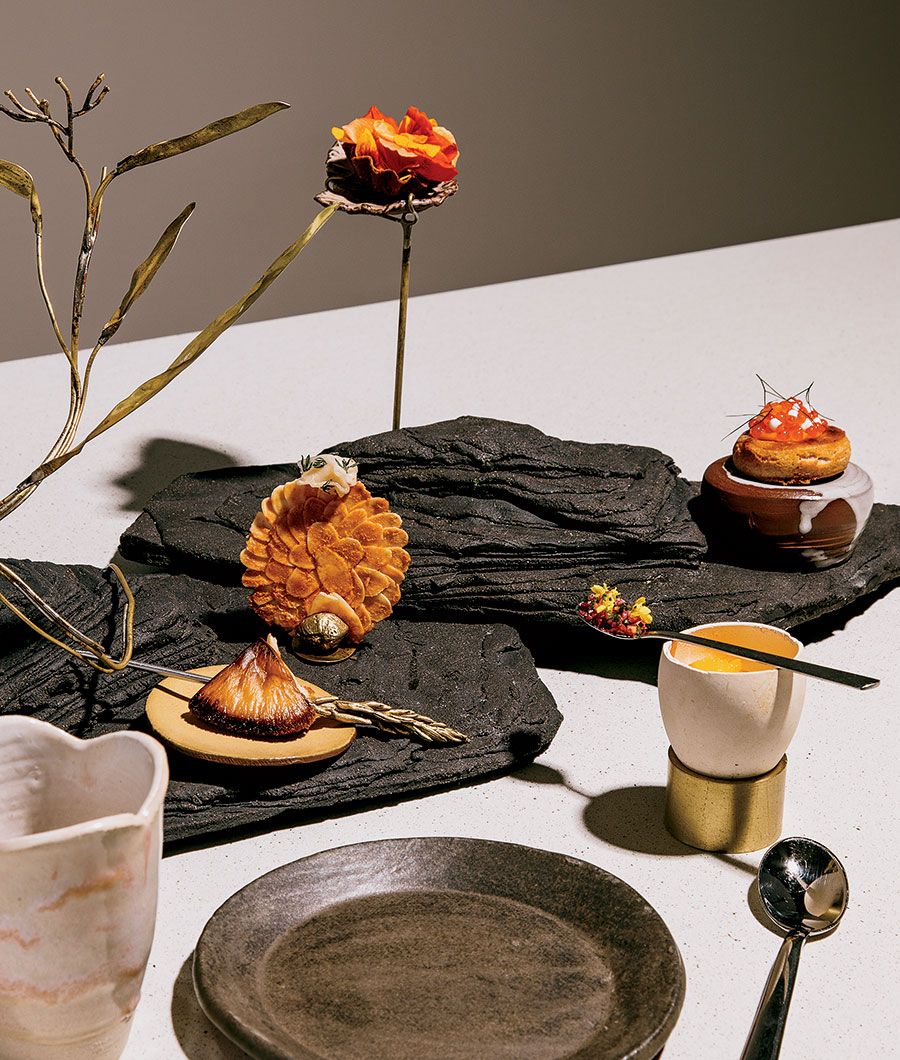My first bite at Esmé is a Cheeto. Specifically, it’s a housemade Cheeto, one that’s been extruded from a machine constructed by Esmé employees, stuffed with corn pudding, and served with a glass of Champagne. It’s the kind of opening shot that tells me, first: God, I love Cheetos; and second: This dinner is going to be fun.
Esmé is the new Lincoln Park fine-dining restaurant that husband and wife Jenner Tomaska and Katrina Bravo opened in August. I visited in early September, and though some aspects of the experience are still being refined, it’s clear this is a restaurant that knows what it wants to be. Part of that equation is a tasting menu full of perfectly calibrated dishes that reflect Tomaska’s French-Midwest leanings, but there’s more happening here than clever cooking.
When I call Tomaska and Bravo, we barely touch on the food. Instead, we discuss a restaurant’s responsibility to put its staff first while shining a light on underrepresented folks in the industry and being better members of the community. “We worked at MK, and the values of that restaurant, under Michael Kornick and Erick Williams, are in sync with what we believe in,” Tomaska says. “Our mission is to create a space to push others forward.”
How are they doing this? “We’re educating our staff about how the business works,” Tomaska says. “We’re covering 50 percent of staff health insurance, and our goal is to pay for everything in six months.” On the drink side, operations manager/beverage director Tia Barrett assembled a wine list with producers like Oregon’s Ricochet, which donates 5 percent of sales to nonprofits.
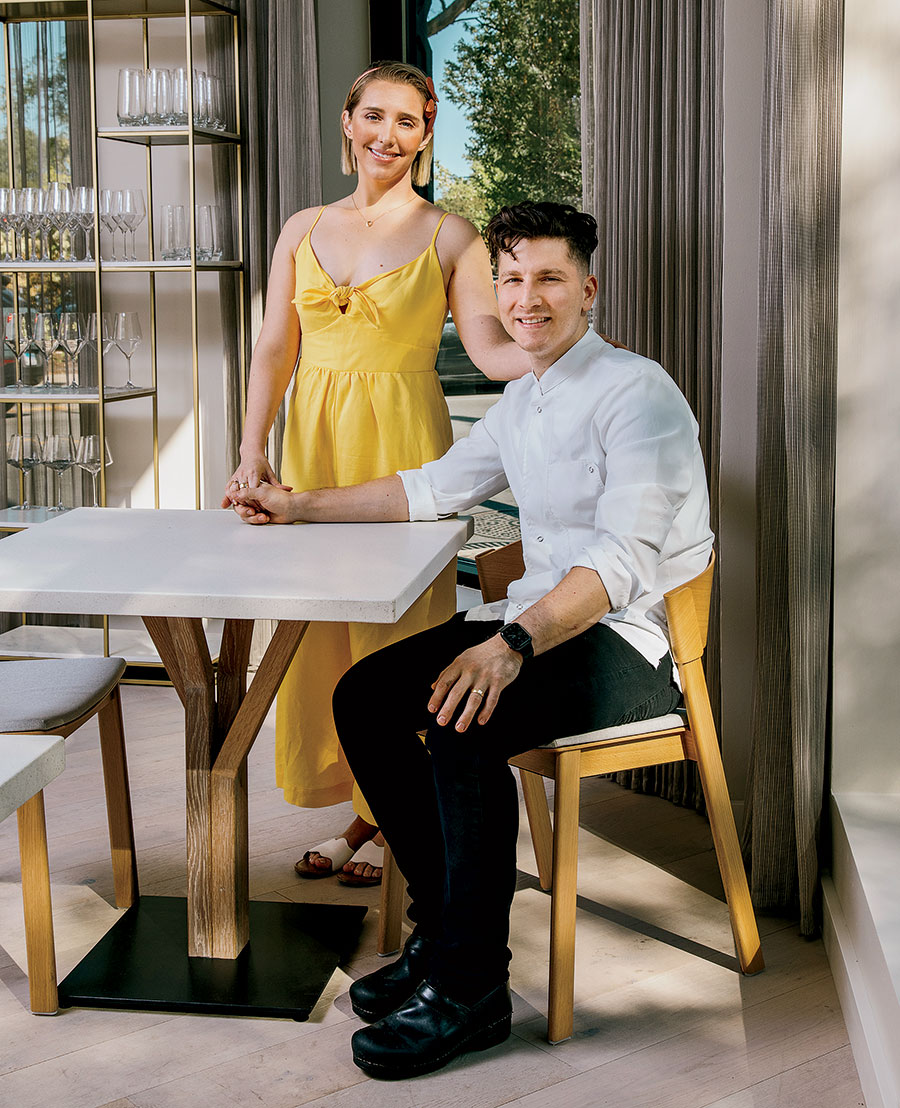
Bravo and Tomaska are also using the restaurant as a launch pad for artists. “Arts education was cut in Chicago, so we thought, What could we do?” Bravo says. They’re showcasing work from local artists like Danielle Klinenberg and Amanda “Raspy” Rivera, as well as planning artist openings and dinners. That focus extends to the table. “I’m creatively led via the vessel,” Tomaska says. “I don’t want to serve the same dishes for 20 years. Things will come and go, but will the vessel become a staple?”
For diners, the food has to be exciting as well. I’d argue there are multiple items that deserve staple status, like the pork rib, slathered with banana caramel, lime zest, and sesame and served on a ceramic bone handle. Consider the pierogis, two delicate, crispy packets stuffed with onion and raclette, basking in a burnt onion consommé, and topped with black truffle; it tastes like a supercharged French onion soup. I’m looking forward to visiting the adjacent bar, which Bravo and Tomaska opened to let neighbors gather over items like a whole fish and a burger.
“When we talked about the community elements of Esmé, everyone’s advice was, ‘Just cook; don’t open this restaurant,’ ” Bravo recalls. “But once March hit with the pandemic and then the civil rights protests, we dug in our heels. We were going to do it, but now we were definitely going to do it.” From $200. 2200 N. Clark St., Lincoln Park
What a Dish
The story behind three of Esmé’s most striking serving pieces
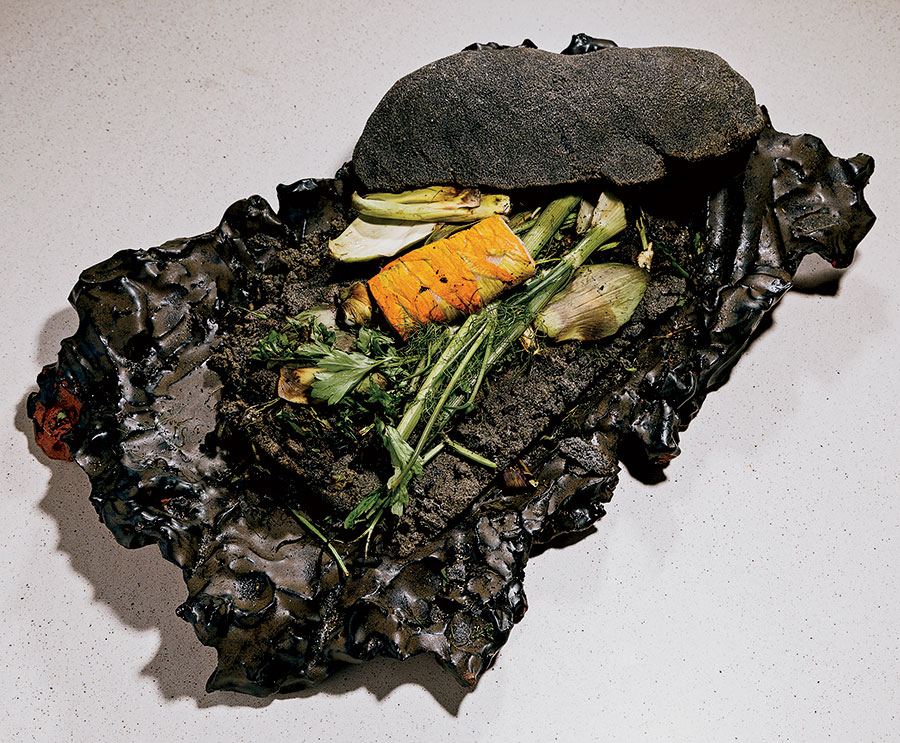
Salt Bake
Aron Fischer, Facture Goods
This wood ash-stained piece from Chicago maker Fischer inspired Tomaska to create the lush ash-and-salt-baked sturgeon. It’s removed from the salt casing tableside and plated with bagna cauda and artichoke barigoule.
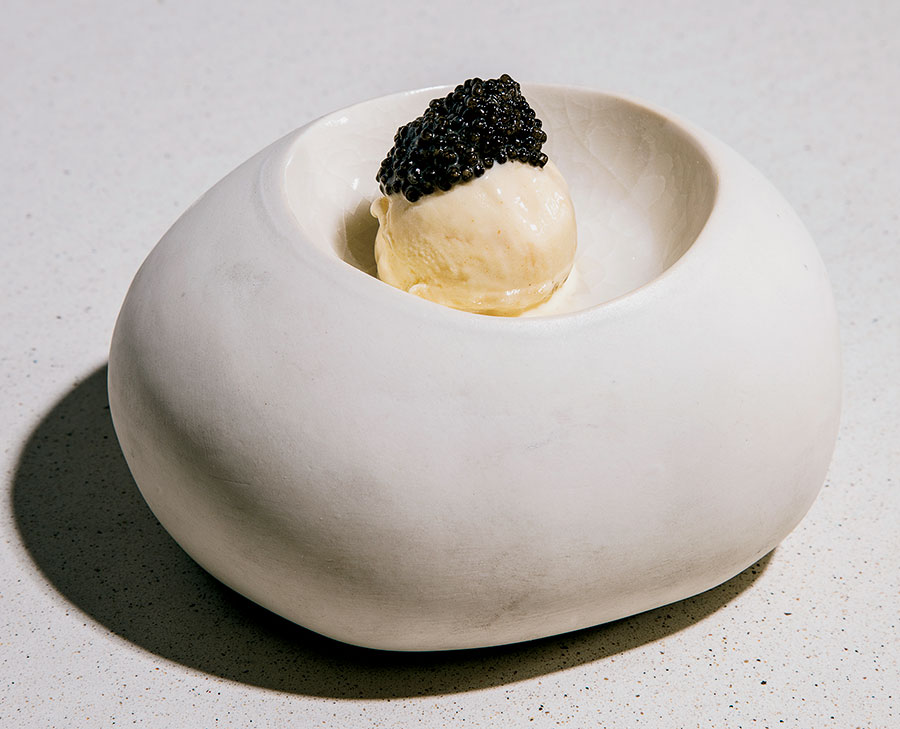
Mother of Pearl
David Kim, DTK Ceramics
This lustrous dish, reminiscent of mother-of-pearl caviar spoons, was designed by Chicagoan Kim and cradles a scoop of white sweet potato ice cream accented with miso and dolloped with osetra caviar.
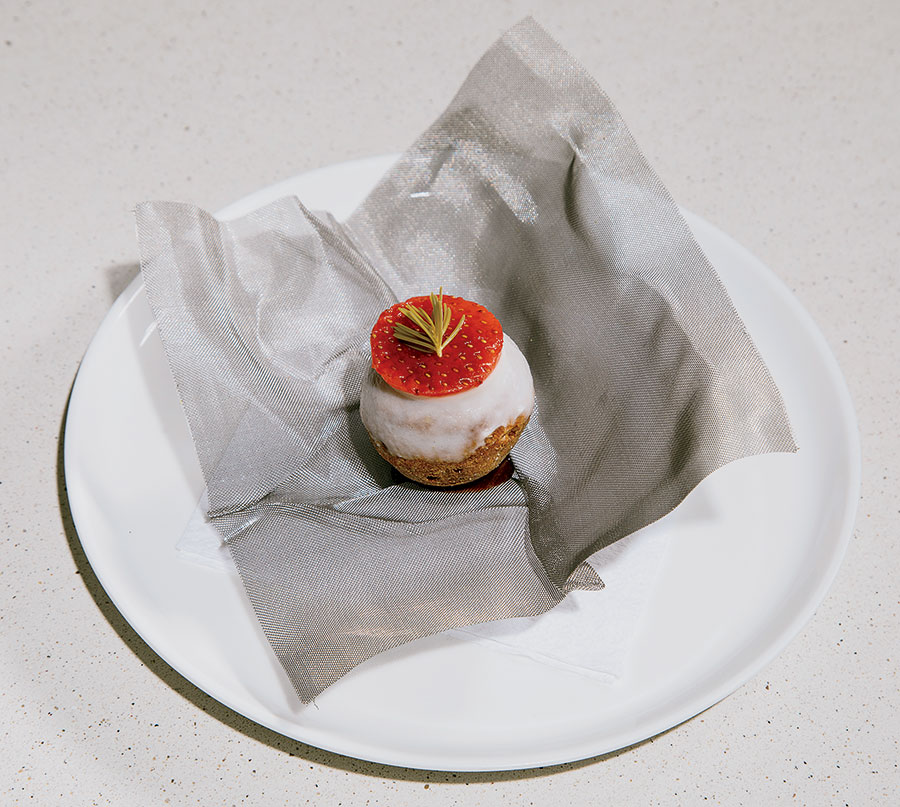
Lips
Polly Verity, Polyscene
Wales-based sculptor Verity made this delicate origami-inspired steel plate for an opening canapé; it presents a strawberry, spruce, and parsnip gougère.



